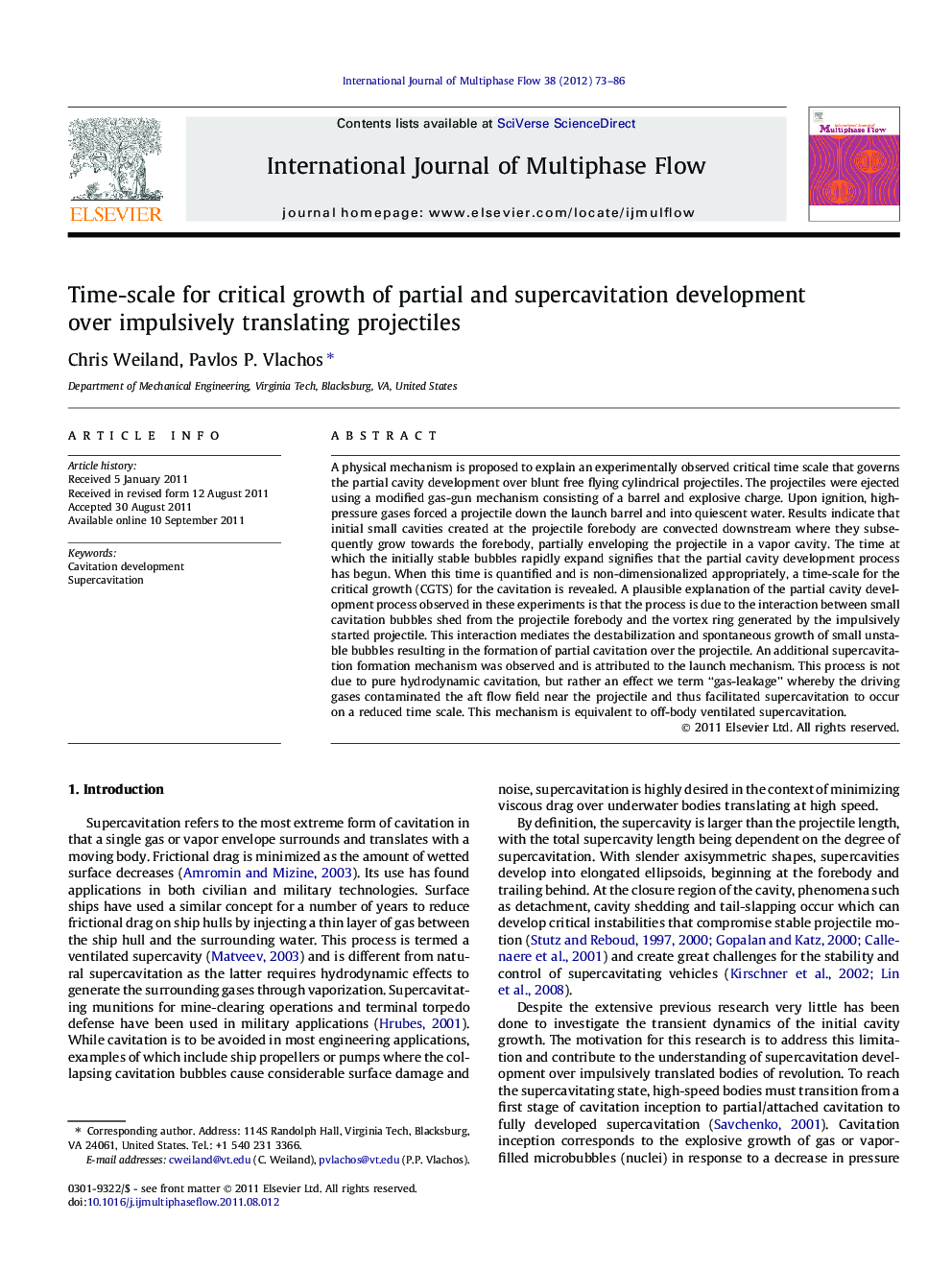| Article ID | Journal | Published Year | Pages | File Type |
|---|---|---|---|---|
| 667352 | International Journal of Multiphase Flow | 2012 | 14 Pages |
A physical mechanism is proposed to explain an experimentally observed critical time scale that governs the partial cavity development over blunt free flying cylindrical projectiles. The projectiles were ejected using a modified gas-gun mechanism consisting of a barrel and explosive charge. Upon ignition, high-pressure gases forced a projectile down the launch barrel and into quiescent water. Results indicate that initial small cavities created at the projectile forebody are convected downstream where they subsequently grow towards the forebody, partially enveloping the projectile in a vapor cavity. The time at which the initially stable bubbles rapidly expand signifies that the partial cavity development process has begun. When this time is quantified and is non-dimensionalized appropriately, a time-scale for the critical growth (CGTS) for the cavitation is revealed. A plausible explanation of the partial cavity development process observed in these experiments is that the process is due to the interaction between small cavitation bubbles shed from the projectile forebody and the vortex ring generated by the impulsively started projectile. This interaction mediates the destabilization and spontaneous growth of small unstable bubbles resulting in the formation of partial cavitation over the projectile. An additional supercavitation formation mechanism was observed and is attributed to the launch mechanism. This process is not due to pure hydrodynamic cavitation, but rather an effect we term “gas-leakage” whereby the driving gases contaminated the aft flow field near the projectile and thus facilitated supercavitation to occur on a reduced time scale. This mechanism is equivalent to off-body ventilated supercavitation.
► A time scale that governs the development of transient cavitation is proposed. ► This time scale is governed by vortex ring induced cavitation. ► A gas leakage effect mediates the super cavity formation.
